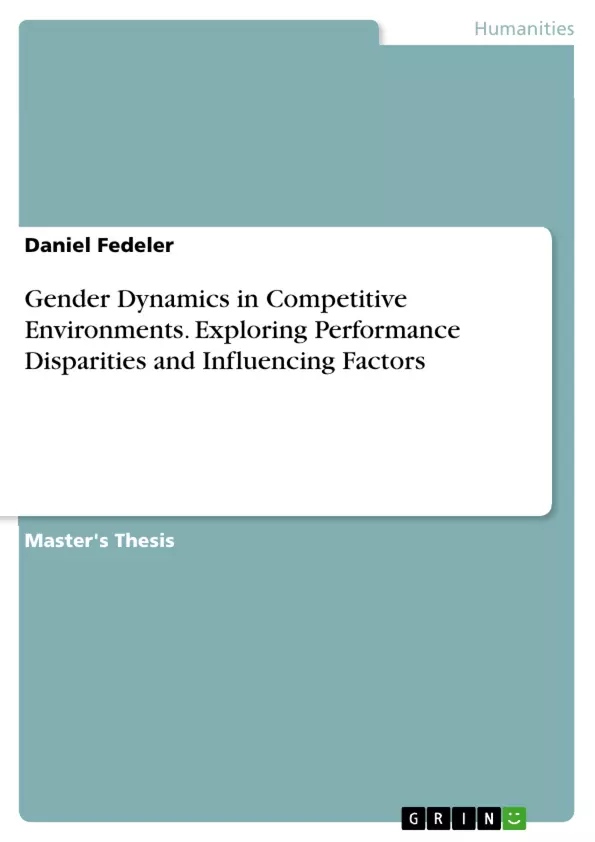Competitiveness has been traditionally thought to increase productivity. However, some studies, have shown that competition can affect women's performance negatively. In order to design better strategies that promote the performance of all genders and increase the overall performance, it is important to understand why this is the case. Therefore, this thesis tries to better understand how competition tends to negatively affect women’s performance, by studying what can influence the performance in general. According to Booth & Nolan (2022) the type of opponent can affect behavior and results in competitive environments. Therefore, this thesis also analysis if there is a performance difference competing against a real person (in the following called real-other) or an uncertain goal (in the following called threshold).
Inhaltsverzeichnis (Table of Contents)
- Introduction
- Related Literature
- Conceptual Framework
- Literature Review on Competition and Gender Differences
- Feedback and Performance
- Hypotheses
- Experimental Design and Procedure
- Participants
- Experimental Procedure
- Measures
- Data Analysis
- Results
- Socio-demographics & General Performance Results
- Distributions of Performance and Performance Change
- Main Results
- General Structure of the Analysis
- Results from Hypothesis Women against a Threshold or a Real-other
- Results from Hypothesis Men against a Threshold or a Real-other
- Results from Changes in Performance after negative Performance Feedback by Gender
- Results from Change in Performance after Positive Performance Feedback by Gender
Zielsetzung und Themenschwerpunkte (Objectives and Key Themes)
The study aims to explore the origins of gender differences in performance in competitive environments. It investigates the impact of feedback and the presence of a real opponent versus a threshold on performance outcomes, specifically focusing on how these factors influence men and women differently.
- Gender differences in performance in competitive environments
- Impact of feedback on performance
- Influence of a real opponent versus a threshold on performance
- The role of gender in shaping performance outcomes
- Exploring potential mechanisms behind observed gender differences
Zusammenfassung der Kapitel (Chapter Summaries)
The introduction sets the stage for the study, outlining the research question and highlighting the relevance of the topic. The "Related Literature" chapter provides a comprehensive review of relevant theoretical frameworks and empirical findings on competition, gender differences in performance, feedback mechanisms, and the role of opponent type (real or threshold). This chapter forms the foundation for the study's hypotheses, which are presented in the subsequent chapter. The "Experimental Design and Procedure" chapter details the methodology used to test the hypotheses, including participant characteristics, experimental procedures, data collection methods, and the statistical analysis plan.
Schlüsselwörter (Keywords)
The key words and focus topics of the text include gender differences, competitive environments, performance, feedback, opponent type (real or threshold), experimental design, and data analysis. The study investigates the impact of feedback and opponent type on gender differences in performance, contributing to the understanding of this phenomenon and providing valuable insights for future research and applications.
- Quote paper
- Daniel Fedeler (Author), 2023, Gender Dynamics in Competitive Environments. Exploring Performance Disparities and Influencing Factors, Munich, GRIN Verlag, https://www.grin.com/document/1446931



